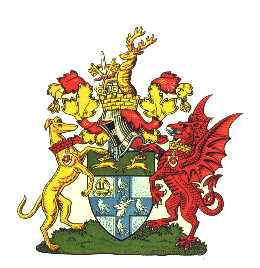
Image from David Wilcox. The Gate has the
lanterns outside and further down on same side is the Museum Pub (Mitchell & Butler)

Thanks to David Wilcox for this superb
view of Mill Street

Looking down towards the town, taken from Church Hill (left). The building
extreme right was the Post Office.
The Gate is the building at the bottom of the road on the image; probably 30s or 40s

Parade

Mill Street 1800 (A hovel is a shed like structure)

Mill Street And Surrounds approx 1950
and below with named places marked. A bus can be seen heading into Sutton
but little else. Image: David Wilcox


Junction of Mill Street & Park Road 1960s.
Image: David Wilcox

Mill Street
early 70s

|
The old Town Hall, now a Masonic Hall, The Gate is on the
left. The Hall also once contained Rosella's Cinema. Known as the Town
Hall before it was purchased by the Freemasons (at a cost of £4100) and,
in a certified copy of the document inserted in the foundation stone it is
referred to as the Moot Hall - the stone being laid on the 25th August,
1858.The first and second Moot Halls stood at the top of Mill Street where
later there was a weighing machine, long since gone. Also, the old
Town Hall housed Barclays Bank in the 50s; thanks to Chris Thompson for
that info. He also tells me there was a nice cafe in Mill St, he thinks it
was called 'Dick's'. No railway
existed. Those who had business in Birmingham and lived in Sutton took
eighty minutes at least if they went by coach, or drove into Birmingham in
their own conveyances. The railway from Aston to Sutton started in 1860
and was not completed until 1863.
The Town clustered at the top of the hill. The Moot Hall situated at the
top of Mill Street was a two-storey building with a small covered market
at one end. There were no buildings on the Park side between those on Mill
Street and the Park. The dam already existed but there were no shops
and a series of pools led from Windley right away to Holland House.
The old workhouse (part of the site), and the gaol, where the cell still
remains in the sub-basement, were renovated and turned into Municipal
Offices. The Hall served variously as the Magistrates' Court; Sutton's
first cinema, Rosella's, (there were adverts for Rosella's in the Sutton
News in 1915); the Sutton Fire Station situated in the corner of the
present car-park until December 1905. The engine was horse-drawn and the
horses stabled with the engine - a rusting bracket up on the wall by the
side of the doors was used to dry the hoses. Part of the site was occupied
by Almshouses and probably used for other purposes besides.
Info: David Wilcox |



What I like about this one is the gent on the right, moving too fast for the
camera to get a shot - he looks like he is carrying a rather large load
possibly firewood? Also explains why, in those days, people stood rock steady
for the photographer. The shop on the left is actually in The Parade.
Boots Chemist is listed in 1913 at 58 Parade. So is an undertaker, Bastable.
Beddoes Stores (Grocer) JK Bourne, Corn & Hay, 81 Parade.
Harriet Brittain, fancy repos, 46 & 48 Parade. Buckley, hairdresser 83 Parade.
Could be any of those. The Parade led from Mill St to Birmingham Road.


Gas Office in Mill Street







Masonic signs on windows can 'almost' be
seen


2016



|
|

